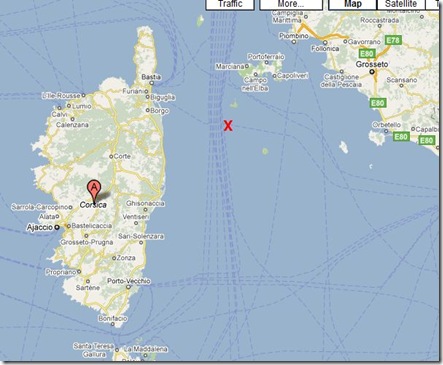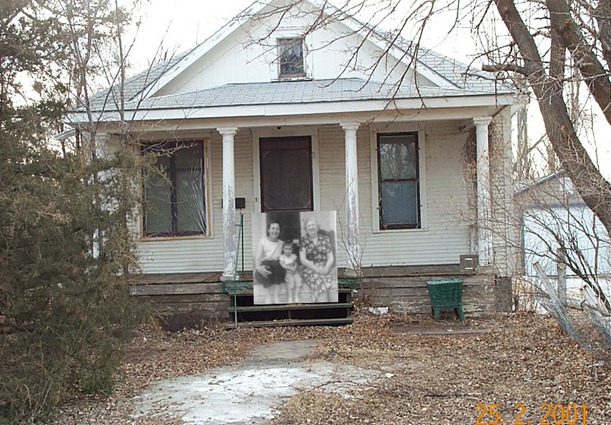
Myself, with my grandmother, Lillian Knutz (left) and great-grandmother, Virta Knutz, sitting on the steps of a house that once was so filled with life and love. Though the house is empty, a part of so many of us will always be there in spirit.

My grandfather, Bill Knutz, found himself a couple of special “hood ornaments” on one hot and sunny summer day in eastern South Dakota – his future wife, Lillian Christensen (right), and her cousin Ruth. This photo, taken in 1935, depicts a common scene at the farm of his parents, Will and Virta Knutz, where their teenage children would stop up the creek to make a “swimming hole,” which was popular with all of the young people in the area.
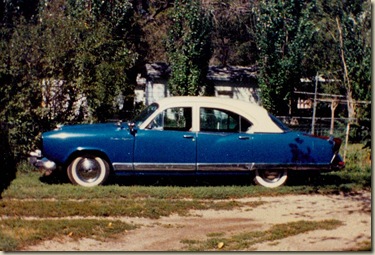
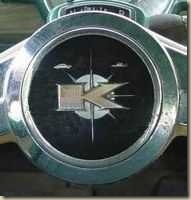
 “Tuesday night an electrical storm came up and a bolt of lightening struck Bill’s house; they knew it struck but didn’t know it set a fire so they went to bed. It struck about 12 and about 1:30 they all woke up smelling smoke. Bill went out for a look, Betty did too they saw the kitchen-roof was a blaze; Betty opened the stair door, it was full of smoke and 1 wall was on fire. It just happened the kids and all slept down stairs because of the storm which was a good thing; for they would have been trapped up stairs. Bill was going to phone for the fire department but the phone was burnt out also the electricity. Lillian and the kids carried out things; Bill did too when he got back. Mrs. Ted Walters phoned to us about a quarter till 2 so we went over. They run out of water and so they couldn’t save the house, they broke out windows and carried out things. Everything up-stairs burnt, so did everything in the kitchen and bathroom; some things were saved in the (living) room, some burned. The kids’ clothing all burned except what they had on; Betty was without shoes and Donny had his pajamas on, no shoes. Before we left the scene of the fire some neighbors came with clothing. Every one were helping with donations of clothing, canned goods, cooking utencils [sic], towels, and wash-cloths.”
“Tuesday night an electrical storm came up and a bolt of lightening struck Bill’s house; they knew it struck but didn’t know it set a fire so they went to bed. It struck about 12 and about 1:30 they all woke up smelling smoke. Bill went out for a look, Betty did too they saw the kitchen-roof was a blaze; Betty opened the stair door, it was full of smoke and 1 wall was on fire. It just happened the kids and all slept down stairs because of the storm which was a good thing; for they would have been trapped up stairs. Bill was going to phone for the fire department but the phone was burnt out also the electricity. Lillian and the kids carried out things; Bill did too when he got back. Mrs. Ted Walters phoned to us about a quarter till 2 so we went over. They run out of water and so they couldn’t save the house, they broke out windows and carried out things. Everything up-stairs burnt, so did everything in the kitchen and bathroom; some things were saved in the (living) room, some burned. The kids’ clothing all burned except what they had on; Betty was without shoes and Donny had his pajamas on, no shoes. Before we left the scene of the fire some neighbors came with clothing. Every one were helping with donations of clothing, canned goods, cooking utencils [sic], towels, and wash-cloths.”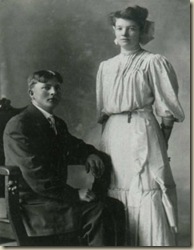


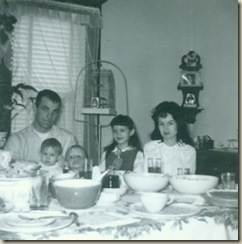

On March 30, 1910, Will Knutz and Elvirta Graves made a life-long commitment to each other. They met while Will was working on a threshing crew, and Virta was helping to serve the hungry men.
50 years later, they celebrated a milestone anniversary. Their marriage would last nearly 56 years, until Will passed away in 1966.
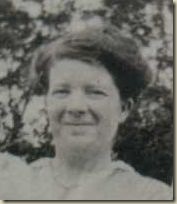
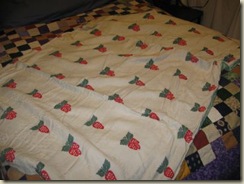 I loved that Strawberry Blanket for as long as I remember. There was nothing particularly special about it, at that time, except that it had strawberries on it and I loved strawberries. Now, of course, it also has all the memories associated with it, particularly being tucked in so warm and safe by the most wonderful Grandma that God ever created.
I loved that Strawberry Blanket for as long as I remember. There was nothing particularly special about it, at that time, except that it had strawberries on it and I loved strawberries. Now, of course, it also has all the memories associated with it, particularly being tucked in so warm and safe by the most wonderful Grandma that God ever created. 
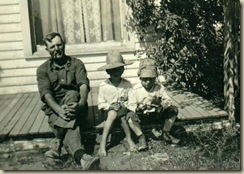
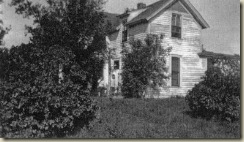
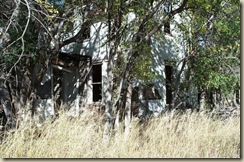
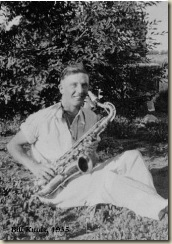 I’m not sure when my grandfather, Bill Knutz, first became interested in being a band leader. As a young man, he farmed himself out (pun intended) as a hired man, and did some traveling around the midwest during harvest time. He lived frugally, and when the season was over, treated himself to a saxophone he’d found in a pawn shop in Nebraska, as well as a ring for his favorite girl. Both ended up being “keepers.” He taught himself how to play, and eventually formed his first band, “Bill Knutz and His Harmonians”, including his future brothers-in-law, Ray Christensen playing the fiddle and trumpet; Clarence Christensen playing the clarinet; and Bill’s brothers Howard playing the bass fiddle, and Richard on the drums. Bill’s mother, Virta, kept track of their bookings.
I’m not sure when my grandfather, Bill Knutz, first became interested in being a band leader. As a young man, he farmed himself out (pun intended) as a hired man, and did some traveling around the midwest during harvest time. He lived frugally, and when the season was over, treated himself to a saxophone he’d found in a pawn shop in Nebraska, as well as a ring for his favorite girl. Both ended up being “keepers.” He taught himself how to play, and eventually formed his first band, “Bill Knutz and His Harmonians”, including his future brothers-in-law, Ray Christensen playing the fiddle and trumpet; Clarence Christensen playing the clarinet; and Bill’s brothers Howard playing the bass fiddle, and Richard on the drums. Bill’s mother, Virta, kept track of their bookings.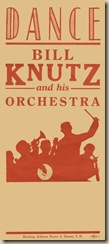
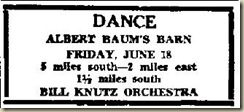
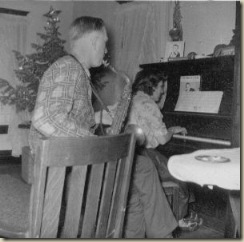
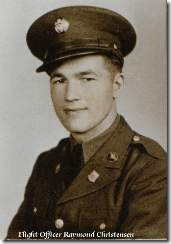
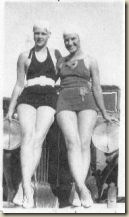 hole”, and occasionally took my grandfather’s old Model A on a road trip. Ray and my grandmother, being less than two years apart, were naturally very close. She was his trusted confidante, and vice versa. But it was his friendship with my grandfather, Bill, that brought out the fun-loving sides of both of them. Bill told how they went to the river and caught snapping turtles, and when they had several of them, they daringly positioned the tail of one in the mouth of another, and so on, until they had a Wagon Train of snappers, all “snapped” together. They then, very carefully, got the first snapper to bite onto a cigarette and clench it between his jagged, razor teeth long enough for a picture to be taken. They learned new and creative ways to shock each other with the aid of an old magneto, an object that kept the boys occupied off and on for years. No one ever truly knew what was safe to sit on, pick up, or even touch with Bill and Ray and that magneto around.
hole”, and occasionally took my grandfather’s old Model A on a road trip. Ray and my grandmother, being less than two years apart, were naturally very close. She was his trusted confidante, and vice versa. But it was his friendship with my grandfather, Bill, that brought out the fun-loving sides of both of them. Bill told how they went to the river and caught snapping turtles, and when they had several of them, they daringly positioned the tail of one in the mouth of another, and so on, until they had a Wagon Train of snappers, all “snapped” together. They then, very carefully, got the first snapper to bite onto a cigarette and clench it between his jagged, razor teeth long enough for a picture to be taken. They learned new and creative ways to shock each other with the aid of an old magneto, an object that kept the boys occupied off and on for years. No one ever truly knew what was safe to sit on, pick up, or even touch with Bill and Ray and that magneto around.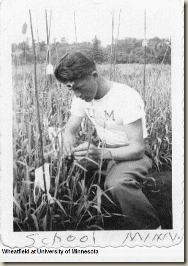
“Started to school Saturday and like it O.K. It will come fast but if they keep me in like they have in the past I’ll not only get it, but get fat too. (The) Grub is swell … I’m learning typing – code – electricity and eventually radios. If I pass I may get to be radio man on a bomber and fly all over heck…”
“I’ve got quite a bit of faith in my pilot and we get along as well as anybody could … We’ve got to have perfect teamwork to live out this blessed war so we pay as much attention in our teaming up as we would to getting married - probably more. In this case “until death do us part” doesn’t seem to lend any humor to the situation whatever.”
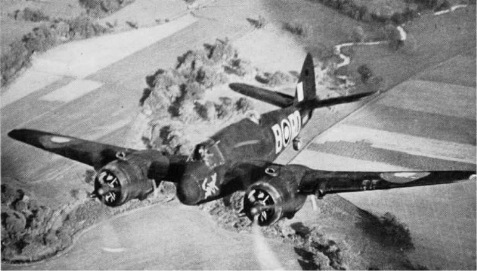
“When we go airborne we can look right into Herr Hitler’s back yard and make faces at him. One of his little boys done foxed me the other night so here I sit on the end of the runway just awaitin’ to get revenge…”
